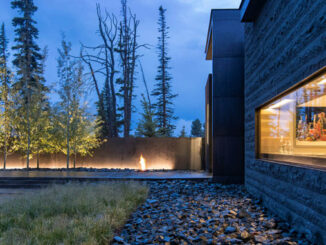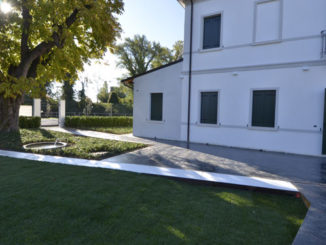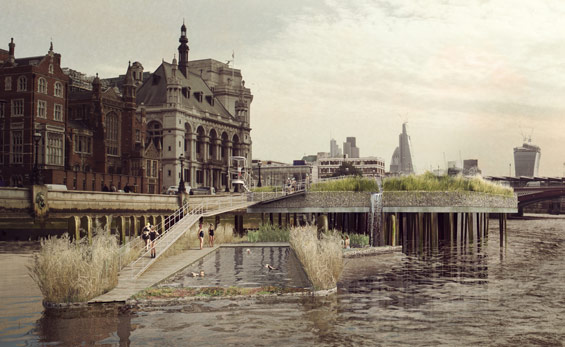
In a competition to find the most imaginative ideas to transform our cities into healthier, more liveable places the Landscape Institute has revealed its top eight ‘Healthy Places’ design ideas. Launched as part of a Healthy Landscapes Symposium at London’s Garden Museum, and following publication of the Landscape Institute’s Public Health and Landscape position statement, all eight competition winners presented their ideas in a fast-paced and exciting session on 30 Apri. Each winner had 5 minutes and fifteen slides to convince the audience that their concept is the best. The audience will then voted for the overall winner.
Launched by the Landscape Institute the open call for design ideas looked for ambitious and innovative proposals demonstrating creative thinking on green infrastructure and health. By 2030 two-thirds of the world’s population is expected to live in cities, but what should these cities be like, what will make them ‘liveable’ and do we need a new remit for the built environment? As cities develop and attain greater density, new and exciting ideas for how to make daily life more liveable are in demand.
Winning entries:
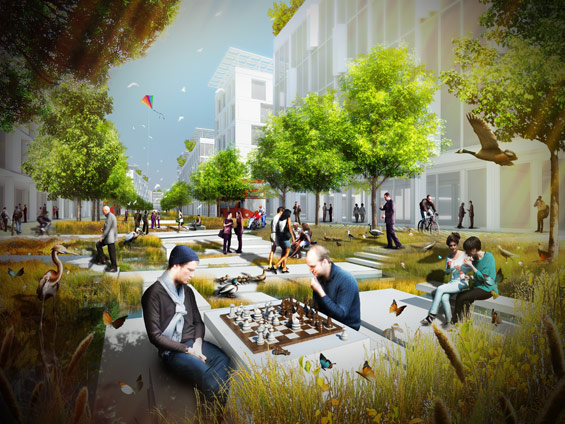
Water boulevards by Baharash Bagherian of Baharash Architecture (3rd Place at Garden Museum GI Week)
An integrated design approach between land and water, creating healthy places for people in dense cities whilst also mitigating the risks of flooding and pollution. The approach can be applied as a network of sustainable green streets in any city at risk of flooding.
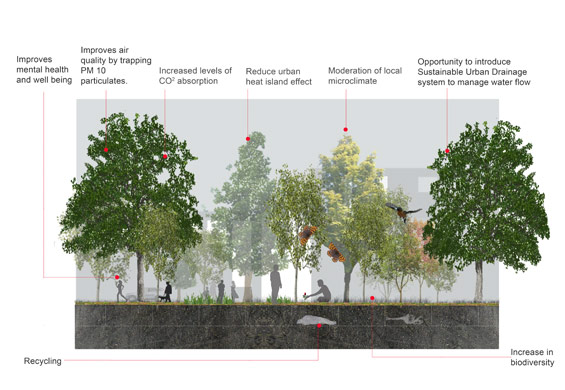
Green(Burial)Infrastructure by Ann Sharrock, Landscape Architect and Ian Fisher of Manchester School of Architecture
A proposal to direct future cemeteries away from the community fringe and encourage incorporating burial facilities into appropriate temporal un-programmed spaces, awaiting development. In other words “to reframe death spaces as places that provide services to the living.”
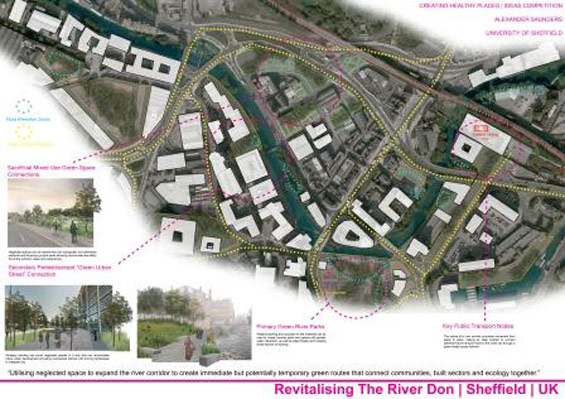
Revitalising the River Don by Alexander Saunders of the University of Sheffield
A proposal to transform the previously industrialised waterways in Sheffield into a green corridor along the River Don with urban woodland and wetlands.
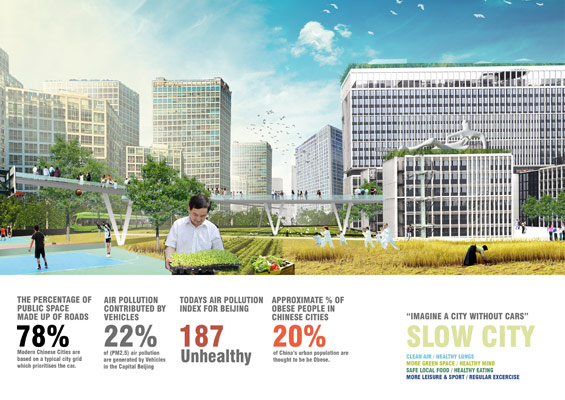
Slow City: ‘Imagine a city without cars’ by Rupert Dehaene-Gold & Atkins Shanghai Landscape Studios
“Our dream is simple: Imagine a city without cars. Call it a Slow City, because it is made for people to live in and enjoy. Dream of all the benefits a car free city might give: new public space, sustainable transport, better air quality, and former roads converted into Food Parks where fresh produce can be grown.”
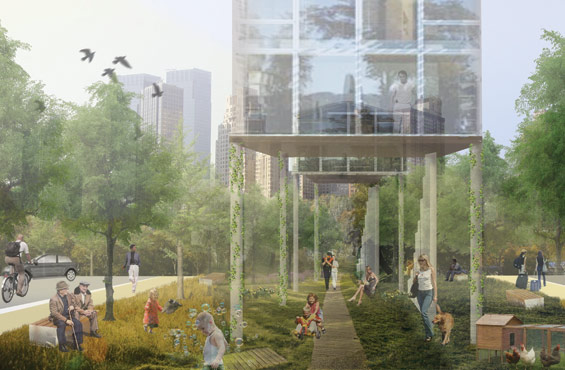
Park life by Hannah Cameron & Atkins Shanghai Design Studio
“The park is where we can meet friends, children play, we relax and take a deep breath, feeling escapism among the trees. What if we brought the park literally to our front door? What if we reclaimed private, residential streets as local community space?”
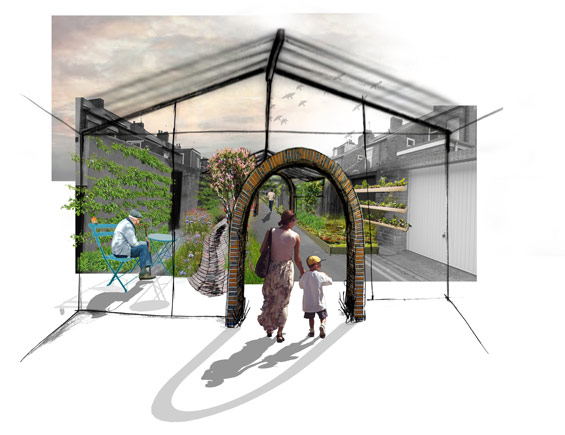
Arcadia culture by Fairhurst
Although the terraced house has been modified in numerous ways, exterior spaces and surrounding streets have changed little. Modification of exterior space to include greenways that weave through existing terraces could benefit the health of residents and fit the aspirations of future communities.
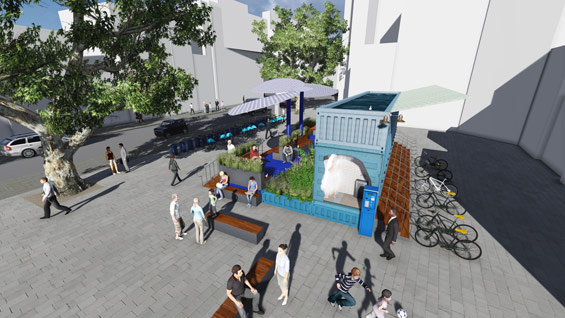
Soap box: rejuvenating commuting communities by Chris Moss of Earthenware Landscape Architects Ltd (1st Place at Garden Museum GI Week)
For many, the barrier to a healthy commute is not the lack of will or equipment but the absence of suitable showering and changing facilities. This project re-conditions old 20 and 40’ shipping containers into modular rainwater-fed showers, gardens and seating hubs.
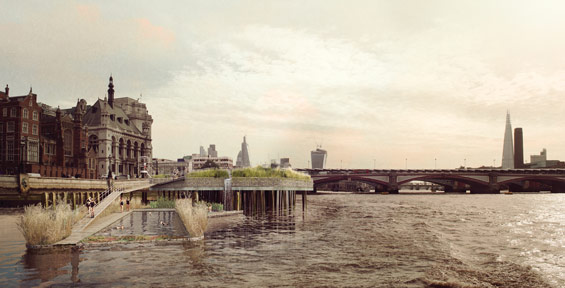
Thames baths project by Studio Octopi, JCLA, Civic Engineers (2nd Place at Garden Museum GI Week)
London’s largest public space, the River Thames, has been enclosed by roads and buildings that restrict accessibility. Thames baths projects would give every Londoner access to the River Thames, with a proposal that imagines a river that safely permits swimming – connecting Londoners to the heartbeat of London.
To find out more about the winning ideas visit the Landscape Institute’s website.


